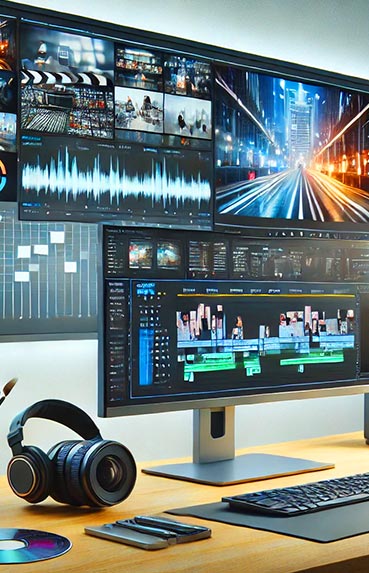In today's digital era, where user attention is a scarce and valuable resource, creating appealing visual content has become a necessity for any marketing strategy. It's not enough to just have an online presence; businesses and brands must effectively capture and hold their audience's attention. This is where the power of visual content comes into play. This article will explore how you can create impactful visual content that not only attracts your audience but also reinforces your brand message and helps you achieve your marketing goals.
The Importance of Visual Content in Digital Marketing
Why Visual Content is Crucial
Visual content has the ability to capture attention more quickly than text. Studies indicate that the human brain processes images up to 60,000 times faster than text. On platforms like Instagram, Pinterest, and Facebook, where visual content dominates, brands that use attractive images tend to have higher engagement rates.
Benefits of Visual Content
- Greater information retention: Visual content helps the audience retain more information. According to some studies, people remember 80% of what they see, compared to just 20% of what they read.
- Increased engagement: Posts that contain images generate 650% more engagement than posts that only contain text.
- Reinforcement of brand identity: Through consistent visual elements, such as colors, fonts, and logos, brands can establish a recognizable and trustworthy identity.
Strategies for Creating Attractive Visual Content
Know Your Audience
Understanding who you're targeting is essential for creating content that resonates. Research what types of images and graphics they prefer and which platforms they use most frequently.
- Conduct surveys to learn about your audience's visual interests.
- Analyze engagement metrics on your social media to identify successful patterns.
Visual Design and Brand Consistency
Visual consistency is key to establishing a strong brand identity.
- Color palette: Choose a color palette that reflects your brand's personality. Use tools like Adobe Color to experiment with combinations.
- Typography: Select fonts that are readable and complement your brand image. Maintain consistency across all your content.
Tools for Creating Visual Content
There are numerous tools that make it easier to create visual content, even for those who are not professional graphic designers.
- Canva: Offers easy-to-use templates for a variety of formats, from social media posts to presentations.
- Adobe Spark: Ideal for creating attractive graphics and short videos.
- Piktochart: Perfect for designing infographics that can communicate complex information simply.
Types of Visual Content to Incorporate
Infographics
Infographics are an excellent way to present complex information in an attractive and understandable manner.
- Use relevant and current data to support your messages.
- Design your infographics with a logical flow that guides the reader through the information.
Videos
Video content is one of the most effective formats for capturing attention. According to HubSpot, 54% of consumers want to see more video content from the brands they support.
- Keep your videos short and to the point to retain viewer attention.
- Include subtitles to make the content accessible to a wider audience.
Images and Graphics
High-quality images can significantly increase the appeal of your content.
- Invest in professional photography or use high-quality image banks like Unsplash or Shutterstock.
- Incorporate graphics to visually illustrate statistics or processes.
The key to successful visual content is combining creativity with strategy, ensuring that each image or graphic serves a specific purpose in your marketing plan.
Optimization of Visual Content
SEO for Images
Optimizing your images for search engines can increase the visibility of your content.
- Use descriptive and relevant file names.
- Include alt text that accurately describes the image.
- Compress images to reduce page load time without losing quality.
Analysis and Continuous Improvement
Measuring the performance of your visual content is essential for improving your strategy.
- Use analytics tools like Google Analytics to track the performance of your visual content.
- A/B test: Experiment with different types of images and formats to see what resonates best with your audience.
Incorporation of Interactivity
Interactive Elements
Interactive elements can significantly increase the time users spend on your content.
- Incorporate visual quizzes or surveys.
- Use interactive maps or animated infographics to provide a more dynamic user experience.
Augmented and Virtual Reality
These emerging technologies offer new ways to interact with visual content.
- Augmented reality (AR) can allow users to visualize products in their environment before making a purchase.
- Virtual reality (VR) offers immersive experiences that can set your brand apart from the competition.
Conclusion
Creating attractive visual content is an essential part of any successful digital marketing strategy. By understanding your audience, maintaining your brand's visual consistency, and using the right tools and types of content, you can capture your audience's attention and communicate your message effectively. As technology continues to evolve, the opportunities to innovate in the realm of visual content are endless.

















